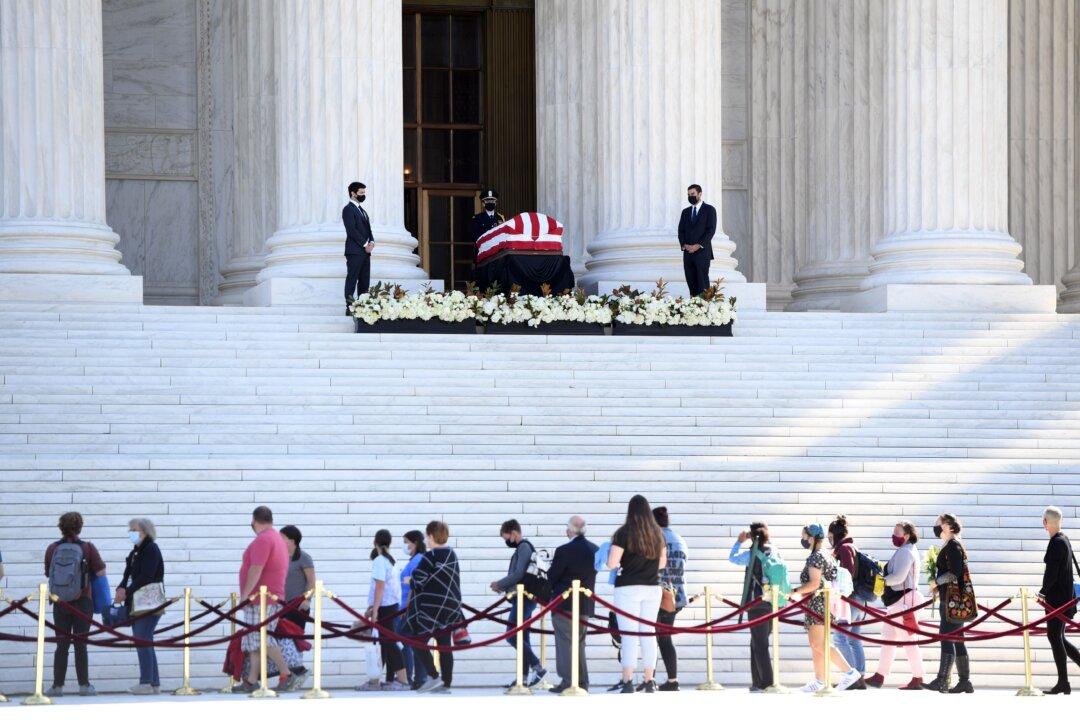Hundreds of people came to the Supreme Court to pay respects to the late Justice Ruth Bader Ginsburg. Mourners lined up outside the white marble building in Washington, where her flag-draped casket was placed after a private ceremony at the court’s Great Hall.
“Her voice in court and in our conference room was soft, but when she spoke, people listened,” said Chief Justice John Roberts during his speech at the Sept. 23 ceremony, after three days of tributes to Ginsburg, who passed less than six weeks after her 87th birthday.





